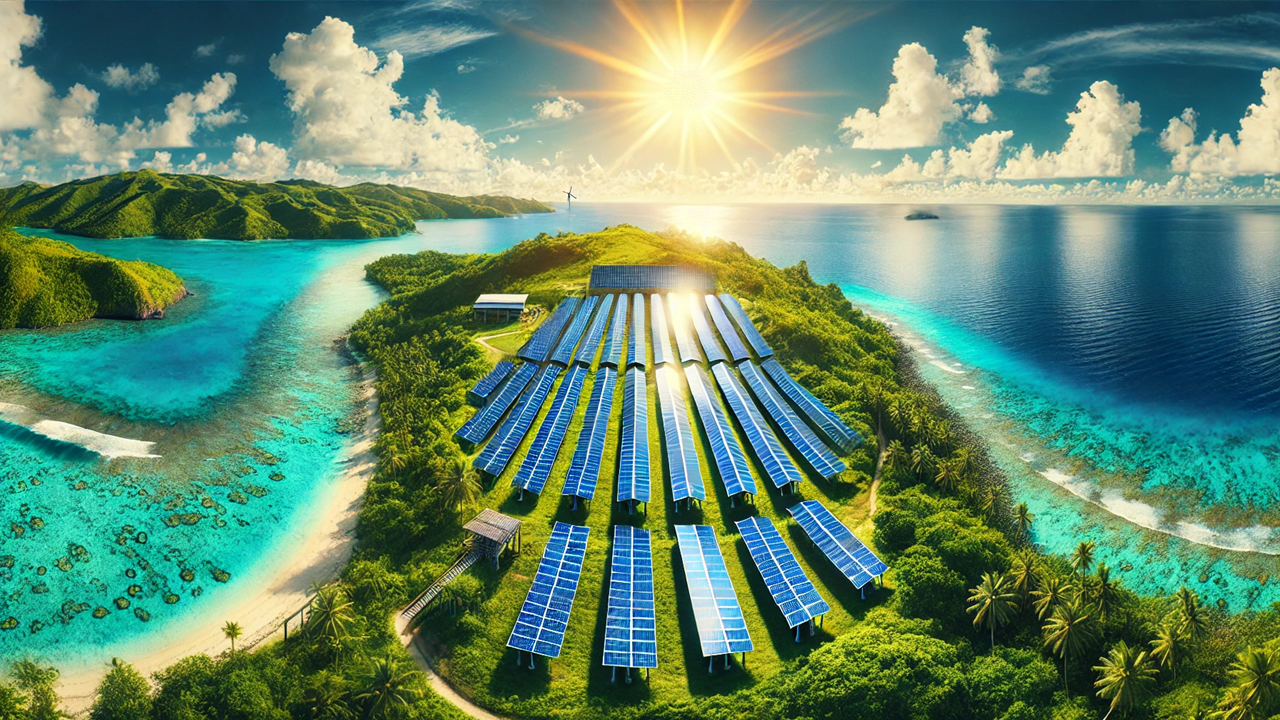Solar-Powered Change: How Clean Energy Transformed Malalison Island’s Future
The Malalison Island Solar Photovoltaic Hybrid Project, assessed by the Asian Development Bank, has revolutionized the remote community’s energy landscape by providing 24-hour electricity through a combination of solar power and backup diesel generation. The project has boosted local businesses, improved educational facilities, and significantly reduced environmental pollution, making it a model for sustainable energy solutions in off-grid communities. Despite facing some technical challenges, the project’s success highlights the transformative potential of renewable energy for rural electrification.

In a remote corner of the Philippines, a tiny island community is lighting up with hope, thanks to a ground-breaking solar energy project that turned Malalison Island’s limited four-hour power supply into a continuous 24/7 electricity service. The “Socioeconomic Impact Assessment of the Malalison Island Solar Photovoltaic Hybrid Project in the Philippines,” published by the Asian Development Bank (ADB), sheds light on the success story of this small but significant island. This transformation has not only improved energy security and environmental sustainability but has also spurred economic growth and enhanced the quality of life for residents.
From Darkness to Light: Overcoming Energy Poverty
Before the solar project, Malalison Island, part of the municipality of Culasi in Antique Province, was struggling to keep its lights on. The island’s 25-kilowatt (kW) diesel generator provided electricity for only four hours a day, leaving most residents without power during critical hours. Limited power meant restricted economic activity, fewer opportunities, and a reliance on pollutive sources like kerosene lamps for lighting and wood for cooking. The introduction of the hybrid energy system—a 50-kW solar photovoltaic (PV) array, 273-kilowatt-hour lithium-ion batteries, and a 54-kW diesel backup generator—transformed the island’s landscape, making reliable and sustainable power available around the clock.
With the new 24-hour electricity service, residents’ daily routines have changed dramatically. Households now enjoy the convenience of home appliances like refrigerators, washing machines, and electric fans. Local businesses are also thriving; the project has enabled over 60 new businesses to take root, from homestays and small stores to boat services and souvenir shops. Women, in particular, have been empowered to start and run these ventures, contributing to household incomes and uplifting the community’s economic standing.
Economic and Social Upliftment: The Power of Reliable Electricity
Access to reliable electricity has sparked a wave of economic and social progress on Malalison Island. The once-quiet fishing village has become a budding tourism destination, drawing visitors to its picturesque beaches and panoramic views. With the power to run air-conditioned rooms, store cold beverages, and keep the lights on, local homestays and resorts now offer more comfort and services to tourists. The community has also benefited from streetlights, improved health services, and better educational facilities.
Local schools, previously hampered by inadequate resources, now utilize computers, printers, and projectors, enhancing the quality of education. Teachers report improved student performance and greater engagement, as well as the ability to use multimedia resources for more dynamic learning. This leap in educational support is a direct result of the stable power supply.
Additionally, the project has helped reduce health risks associated with indoor air pollution from kerosene lamps and open fires. Women and children, who are often most exposed to these hazards, now live and work in safer, healthier environments.
Greener and Cleaner: A Sustainability Success Story
The solar PV hybrid system on Malalison Island is not just an energy project; it is a model of sustainability. By harnessing solar energy, the island has reduced its reliance on diesel by 77%, preventing an estimated 381.48 tons of carbon dioxide emissions over the past four and a half years. This move towards renewable energy has been pivotal in promoting environmental sustainability and aligning with the country’s national goal of reaching 35% renewable energy by 2030 and 50% by 2040.
Residents have also noticed a visible improvement in the island’s environmental quality. The noise and air pollution from diesel generators have significantly diminished, and the island’s natural beauty is preserved for future generations. The shift from kerosene to clean, solar-powered lighting has created a healthier living environment, further improving the quality of life for residents.
Challenges and Opportunities: Learning from Malalison Island
Despite its successes, the Malalison Island Solar Project faced several hurdles. The Energy Management System (EMS), a critical component of the hybrid setup, experienced technical glitches that affected reliability. As the EMS software is proprietary, resolving these issues required external assistance, leading to delays in troubleshooting. With growing electricity demand fueled by increasing tourism and economic activities, the community now needs to expand the system’s capacity to avoid overloading.
Yet, these challenges offer valuable lessons for similar projects in other parts of the Philippines. The Malalison model demonstrates that sustainable energy solutions can be scaled and replicated with the right partnerships—between local cooperatives, private enterprises, and development organizations—to empower other off-grid communities.
- FIRST PUBLISHED IN:
- Devdiscourse










